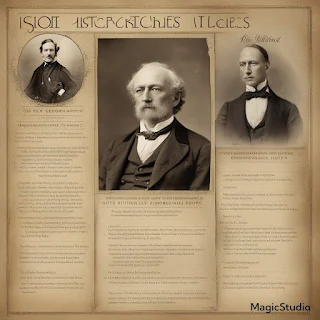Writing historical biographies of family members is a meaningful and enriching endeavor. It allows you to delve into the lives of those who came before you, preserving their stories for future generations. Let's explore the steps, tips, and an example outline for creating engaging historical biographies:
### Steps to Create Historical Biographies
1. **Choose Your Subject:**
- Begin by selecting a family member whose life story you want to explore. Consider individuals who have left a lasting impact, overcome challenges, or have fascinating experiences.
- It could be a great-grandparent, an aunt, an uncle, or even a distant cousin.
2. **Gather Information:**
- Research your chosen subject thoroughly. Collect details about their birth, upbringing, education, career, relationships, and significant life events.
- Look for documents, letters, photographs, and oral histories related to their life.
3. **Interview Relatives:**
- Reach out to other family members who knew the individual. Conduct interviews to gather personal anecdotes and memories.
- Ask about their personality, passions, challenges, and achievements.
4. **Create a Timeline:**
- Organize the information chronologically. Create a timeline of key events in their life.
- Note down important milestones, such as graduations, marriages, and career advancements.
5. **Write the Biography:**
- Start with an engaging introduction. Describe the context and significance of the person's life.
- Divide the biography into sections (early life, adulthood, later years) and delve into each phase.
- Use descriptive language to evoke the time period and setting.
6. **Include Historical Context:**
- Place your subject's life within the broader historical context. Mention significant events happening during their lifetime.
- How did world events impact their choices and experiences?
7. **Highlight Achievements and Challenges:**
- Celebrate their accomplishments. Did they contribute to their community, excel in their profession, or overcome adversity?
- Be honest about their struggles and setbacks as well.
8. **Capture Personal Stories:**
- Share anecdotes that reveal their character. Did they have a favorite hobby, a unique talent, or a memorable sense of humor?
- Include personal quotes or reflections.
### Tips for Successful Historical Biographies Research
1. **Research Widely:**
- Go beyond family stories. Consult historical records, newspapers, and local archives.
- Understand the social, cultural, and political context of their time.
2. **Create Vivid Descriptions:**
- Paint a picture of their surroundings. Describe the places they lived, the clothes they wore, and the food they ate.
- Use sensory details to transport readers back in time.
3. **Be Objective:**
- While celebrating their achievements, remain objective. Acknowledge any flaws or controversies.
- Avoid idealizing or demonizing the person.
4. **Edit and Revise:**
- Write a draft and then revise. Ensure clarity, coherence, and accuracy.
- Seek feedback from others to improve your biography.
### Example of a Historical Biographies Outline
Here's a simple outline for your historical biography:
1. **Introduction:**
- Introduce the individual and their significance within your family.
- Set the stage by describing the era they lived in.
2. **Early Life:**
- Describe their childhood, family background, and education.
- Highlight any formative experiences.
3. **Adulthood and Career:**
- Discuss their career path, achievements, and contributions.
- Mention any obstacles they faced.
4. **Personal Life:**
- Explore their relationships, friendships, and personal interests.
- Share heartwarming or intriguing stories.
5. **Later Years:**
- Describe their life in old age. Did they continue to be active or take on new roles?
- Reflect on their legacy.
6. **Conclusion:**
- Summarize their impact on your family and the broader community.
- End with a thoughtful reflection.


0 Comments